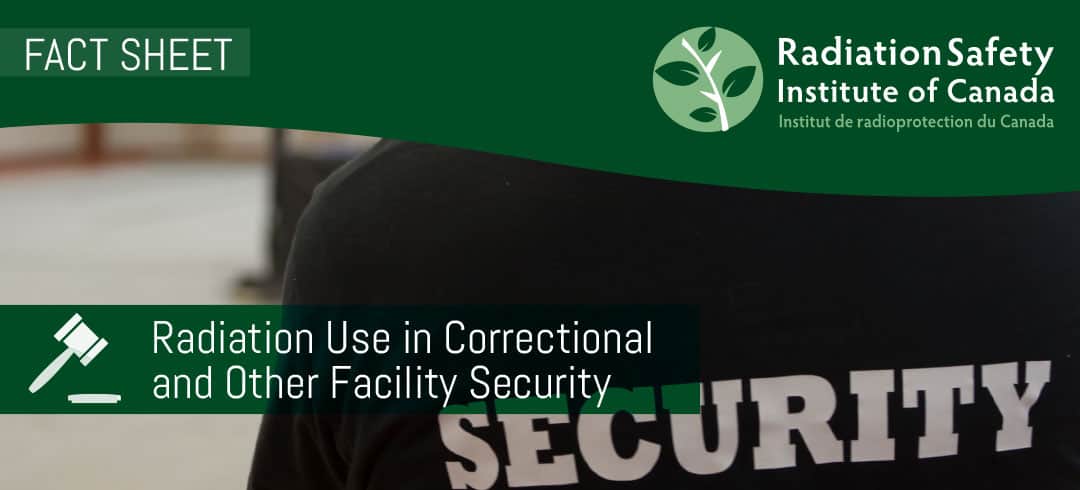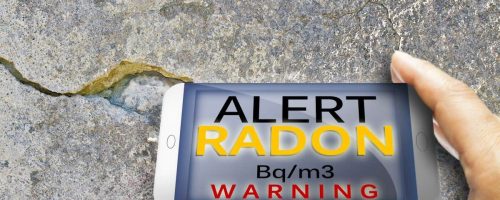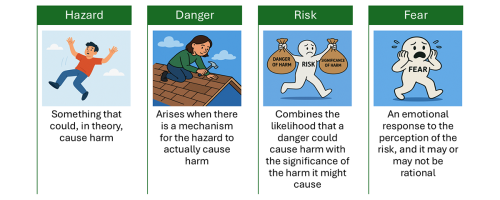Why is radiation used in security screening?
Radiation is used often in correctional facility security screening, as it provides a reliable way to detect prohibited items such as weapons and explosives, in a quick and reproducible way, in some cases, even when such items have been hidden inside a person. Alternatively, it can also be used where companies are mining high value metals (e.g., gold) to ensure that personnel are not taking mined metal off the company site.
What type of radiation is used?
A few different types of radiation are used in security screening at such facilities.
Metal Detectors
Metal detectors are instruments that generate and measure a low strength magnetic field. When this field passes close to a metallic object (perhaps keys in a pocket), the magnetic field is changed, and this is detected by the sensors in the instrument. Magnetic fields are non-ionizing radiation, and exposure to these low level magnetic fields does not cause biological damage.
Baggage Screening
In facilities requiring security for incoming or outgoing items, baggage and other items can be scanned using x-ray scanners. The x-rays in these scanners are used to create pictures of what is inside the bags. Filters in the system allow the images to be colour-coded based on the density of the luggage contents (organic materials (e.g., apples) would be coloured differently than glass or metals, for example). Although these scanners use x-rays, a type of ionizing radiation which can cause damage to cells leading to cancer, the scanners are well shielded. In fact, the scanners are so well shielded that Health Canada does not require operators of baggage x-ray scanners to wear dosimeters, even though these workers are beside the x-ray scanning equipment all day long. Some people have expressed concerns about the effects that radiation will have on the contents of their luggage. It is important to note that the x-rays in the baggage scanners cannot make the luggage or the contents radioactive. In fact, the only potential effect on contents would be for photographic film: extremely high-speed, sensitive photographic film might be somewhat exposed by the x-rays, but regular film and ordinary personal objects are not harmed
Whole Body Transmission Scanners
Security at correctional facilities and other operations such as gold mines is evolving, and the use of transmission whole body x-ray scanners is becoming more common. For example, Ontario is currently in the process of installing these scanners in all adult correctional facilities. These whole body scanners are becoming more common because conventional search methods generally cannot find contraband (weapons, drugs) that has been hidden INSIDE a body cavity, which apparently occurs quite frequently. Similarly for mines, x-ray transmission scanners can find stolen items (e.g., gold nuggets) that have been swallowed or otherwise concealed within the person. Upon entry into the correctional facility, or exit from the mining facility, as the case may be, persons stand on a platform which is moved through a very narrow beam of x-rays. This produces an image which staff can use to determine if the person being scanned has hidden items. Because these are transmission x-ray scans, there is a small radiation dose received by the person who is scanned. The American National Standard body has written ANSI/HPS N43.17-2009, “Radiation Safety for Personnel Security Screening Systems Using X-Ray or Gamma Radiation” which is a standard providing guidelines specific to the radiation safety aspects of the design and operation of security screening systems in which people are intentionally exposed to ionizing radiation. As of yet, there is no such corresponding document in Canada. This document provides limitations on recommended doses to personnel due to this type of whole-body scanner, and provides recommended practices for limiting doses. In general, if doses are limited to the values specified in the ANSI standard, even persons who are scanned regularly will have little risk of any health effect due to the x-ray exposure, as the dose received over a year is not likely to be any more than what would be received due to a single standard medical chest x-ray.
References
To learn more, visit the following websites:
American Health Physics Society Position Statement, Use of Ionizing Radiation for Security Screening Individuals







